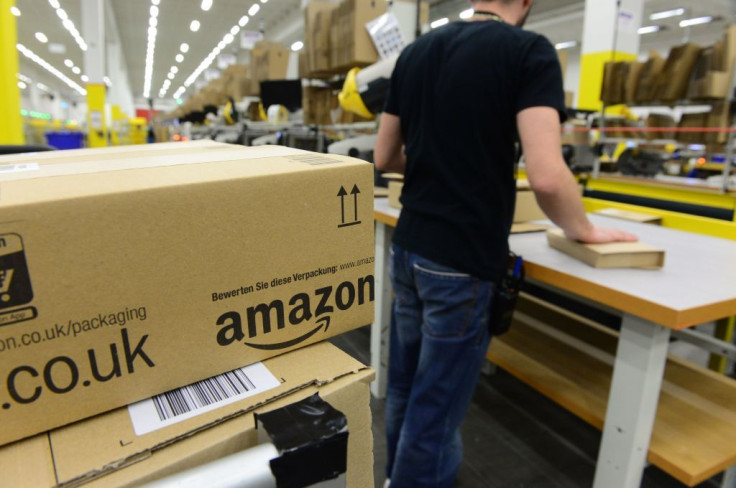The Answers To 4 Big Questions About Future Of Shipping And Real-Time Tracking

Mass retailers have yet to achieve the goal of instantaneous delivery, but today’s consumers are receiving packages faster than ever before. And the battle for quick shipping is heating up as Walmart attempts to tackle Amazon head-on. In May, the retailer announced a rollout of next-day shipping to roughly 75 percent of American consumers by year’s end, on the heels of Amazon’s $800 million-spend on free one-day shipping for Prime customers.
As the two retailers make bigger and bigger promises to their customers, shopper expectations increase — as does the opportunity for disappointment. Amazon in particular benefits from vast consumer confidence; Americans place more trust in the company than the government, religion, the press and even Google. What happens when Amazon can’t deliver on delivery?
In search of the quickest, most accurate delivery, Amazon and Walmart should arm themselves with the latest asset management solution: real-time tracking technologies. These solid-state devices are smaller than the tip of a pencil, but allow for far greater accuracy than a traditional barcode scanning system.
Nanotechnology might involve small devices, but it also prompts a lot of big questions. Here’s what retailers need to know about how real-time tracking is set to disrupt the future of delivery.
What type of opportunities can real-time tracking technologies open up for retailers like Amazon and Walmart?
The nanotechnology behind real-time tracking not only involves a smaller device than now-standard GPS methods, it’s also less expensive and carries more advanced features. For companies like Amazon and Walmart that carry a nearly infinite variety of products, that means the ability to affordably track every shipment that leaves the warehouse to its final destination. Because the device is so small, retailers will have a choice of where to place it, whether on a shipping container, internal packaging or even the product itself.
How can nanotechnology help strengthen customer relationships?
While it’s impossible to quantify the amount of fake merchandise created and sold around the globe, U.S. Customs and Border Patrol seized $1.2 billion of counterfeit goods in 2017 alone. While buying a knockoff purse may seem like a minor crime, the reality is that these low-quality goods are detrimental to the reputation and reliability of retailers like Amazon and Walmart that unwittingly stock them.
Nanotechnology nearly eliminates any customer concern over receiving a counterfeit shipment because tracking devices can be added during the manufacturing process. That verified product is then tracked throughout the shipping and delivery process. Vendors and consumers alike can be confident the product they’re selling or buying is the real deal.
How can real-time tracking data help resolve customer service issues?
One area of particular excitement here is centered around product recalls. Presently, retailers rely on media, word-of-mouth, the internet and other sources to disseminate word of a recall. But those tactics just aren’t good enough. More than 900 million products were recalled in 2016 alone; it would be impossible for even the most conscientious consumer to keep up. For example, the Center for Injury Research and Policy estimates 80 percent of recalled children’s products are still in use.
Meanwhile, nanotechnology boosts the power of a recall to new heights. By scanning an item’s chip with a smartphone, consumers could instantly learn whether it had been recalled, restoring a feeling of security. From an economic standpoint, retailers like Amazon or Walmart could avoid massive recalls by pinpointing products at an individual level. Instead of trashing an entire region’s worth of avocados, only the case or specific avocado affected by the recall could be identified and removed.
What barriers are preventing retailers from implementing real-time tracking technology, and how can retailers overcome them?
Any major shift in technology takes time to adopt and implement. Consider the barcode, a technology that is taken for granted today. While barcodes were invented in the late 1940s and patented in 1952, the first grocery store barcode scan — a pack of Wrigley gum — didn’t take place until 1974. For barcodes to take off, the underlying technology needed to mature, consumers and retailers needed education around their usage and standards, and programs needed to be developed and adopted.
While real-time tracking will face some of the same barriers to implementation, the process will be relatively painless thanks to the low cost of chips and the pre-existing communication infrastructure. True, companies like Walmart and Amazon will need to test small before expanding real-time tracking to all customers. But, like the barcode before it, nanotechnology stands to become the gold standard in tracking.
(Scott Fletcher is the CEO and president of technology company LocatorX )
© Copyright IBTimes 2025. All rights reserved.





















